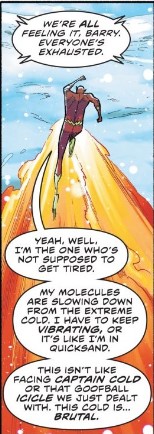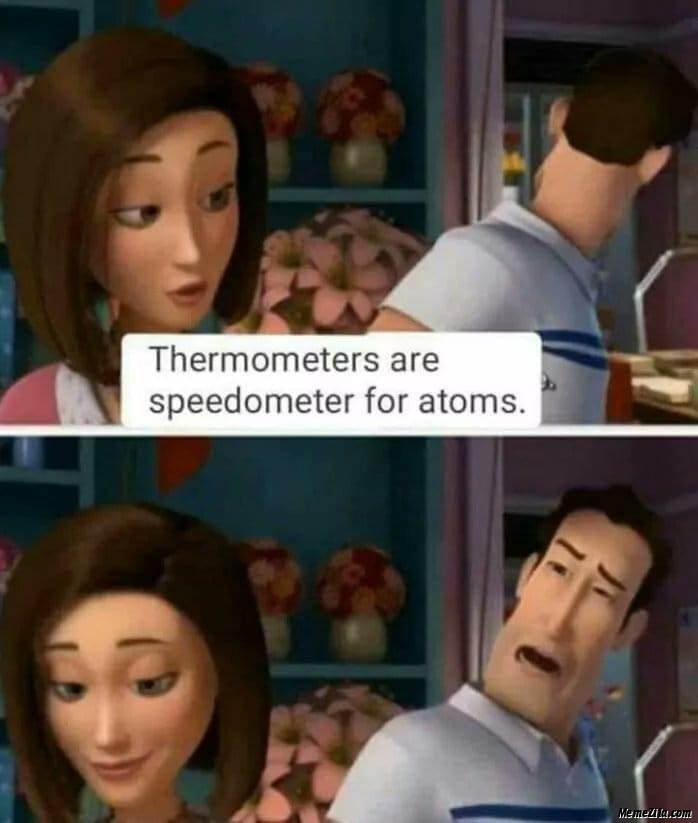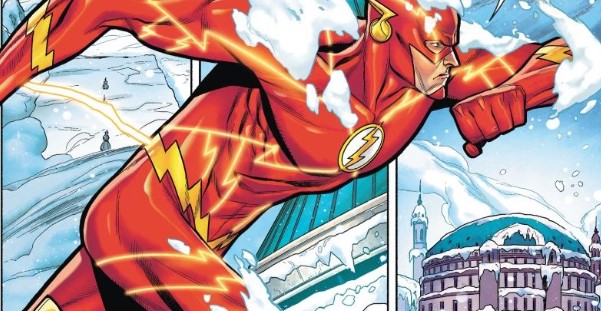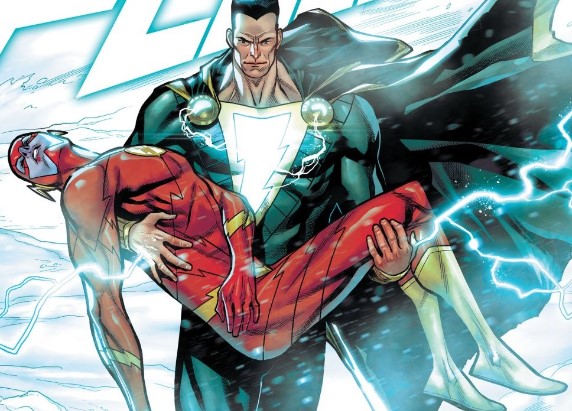DC Comics’ latest event storyline has been Endless Winter, a fun story tying Viking-era history (and heroes) into the present day with the threat of the Frost King. The event is co-written by Andy Lanning and Ron Marz, and drawn by a host of artists across its installments. The issues should still be available at your local comic shop, or digitally on Comixology.
So – the story: originally a relatively low-key, normal Norse dude with a family, Edwald Olafsson also had special powers which allowed him to control the cold. You know where this is going, right? Edwald was misunderstood, feared, ostracized and finally hunted down by his fellow Norsemen and some super-powered help, and vanquished. And his family was killed along the way, which really goes without saying in situations like this. Oh, and he had taken on the name the “Frost King” as well.
Thing is, the remains of Superman’s Arctic Fortress of Solitude (with its Kryptonian power crystals and all) somehow got intertwined with Edwald in the present-day and he woke up angry. Angry at losing his family, angry at the people who put him down (some of whom, like Black Adam) are still around, and overall, just angry. As a result, he’s spun up the planet’s climate to cause a polar vortex (along with ice giants and ice beasts) over the entire earth, bringing about an “Endless Winter” that the Justice League is fighting against.
The storyline which wraps up this week with Justice League: Endless Winter #2 has spread through a handful of specials, the Justice League titles, Aquaman, and The Flash. And given that the Flash (Barry Allen) is the DC Universe’s go-to guy for all things science , let’s check in with The Flash #767.
In the opening pages of the issue, the Flash, playing chatty science exposition guy, runs down a few points about the effects of the extreme cold on the human body, and some that are apparently specific to him. Let’s talk about hypothermia and chilling out – literally.
Kinetic Molecular Theory
Before we dig into the effects of cold on the body, let’s touch on something that the Flash mentioned about his molecules…specifically, this:

It’s a really cold day when the Flash recognizes that his molecules are moving slower (c) DC Comics
What Barry is talking about here is one of the main tenets of kinetic molecular theory. Students most often run into the KMT when studying gas behavior in chemistry, but it applies to all matter. Specifically, all matter is made up of particles (atoms and molecules) that are constantly in motion. That motion is directly proportional to the amount of kinetic energy (the energy of all moving things) the particles contain. We measure that average kinetic energy of matter with a thermometer. The more energy contained within the particles, the faster they move, and the higher the reading on a thermometer.
And now you know why this is funny:

it’s funny.
The particles of warmer things move faster than the particles of cooler things. Also – and this is important for what we’ll be talking about – when warmer particles encounter cooler particles, they collide, giving some of their energy to them. That resultant loss of energy is what we measure as a temperature decrease. Flip that for a temperature increase.
Okay – so with the Flash…yeah, look, Barry’s speed is 100% magic. Not even going to try to apply science to it. And you shouldn’t. It just doesn’t work (see trying to figure out the Flash’s caloric intake…which begs the question of the Flash’s excretory habits, and…um, volume). But you can go with the idea that, through the magic of the Speed Force, he’s more in tune with his molecules than anyone else. That explains his comment about feeling his molecules slowing down. In DC Science, the cold is so extreme that it’s able to sap the energy from the Speed Force directly, slowing his molecules (despite the Speed Force providing an aura protecting him from the wind and external conditions). If you keep an internal logic with that – Barry’s line changes from just a one-off to something suggesting that there is something that is so very not right with this cold, confirming its supernatural origin.
In the science of our world, you can’t “feel” your molecules slowing, but as mentioned earlier, by using a thermometer, you can measure the relative amount of energy (and thus motion) of the molecules of something. Remove energy from a gas, and its molecules move slower. Remove enough, and you’ll cause a phase change back into the gas’ liquid form. Keep removing energy, the molecules move slower and you’ll have a solid version of that matter. From there, in theory, you can lower the temperature all the way down to absolute zero: 0 Kelvin, -273.15 C, -459.67 F the temperature at which all molecular motion stops. You can’t get any colder than that.
If Barry is that aware of his molecular motion, he must be able to tune it out, otherwise, day-to-day existence would be hell.
But let’s talk about cooling some specific matter – a human body.
Hypothermia Defense
By definition, hypothermia is when the body reaches a temperature below 35oC (95oF). Mild hypothermia is between 32-35C, moderate is indicated by a body temperature between 28-32C, and profound hypothermia is characterized by a body temperature of below 20C.
Our bodies don’t know temperature values, but around those temperatures is when we start to see the body respond in a predictable way in order to restore normal body temperature. Your body’s systems should be enough to come back from mild, moderate hypothermia means your body’s defense systems can’t overcome the temperature loss, while profound is characterized chiefly by its effects on the heart (arrhythmias and cardiac arrest) as well as organ failure.
For normal (non Speed Force enhanced) humans, moving very rapidly through super-cold air would bring on hypothermic conditions extremely quickly. The heat produced by your body would go to warm the layer of air adjacent to the surface of your body, but given the wind, that slightly warmer air would move away and be replaced by cold air. And the process would repeat itself millions of times each second. And it’s worse in water – that stuff will soak up heat like no one’s business.
And again, the fact that the Flash is feeling the effects of the cold means that this cold is waaaay extreme and not natural.
Let’s run down the effects of hypothermia on us normal folks when things start getting cold:
- Thermal receptors in the skin send messages to the hypothalamus in the brain, indicating that things are getting pretty cold on the bodies’ outer layers. They hypothalamus (which is responsible for responses to heat and cold) kicks into action, mediating a response, starting with…
- Vasoconstriction in the blood vessels supplying the skin and extremities. The construction closes down the smallest vessels,, which keeps more of the blood towards the core of the body where there’s more important stuff (sorry fingers and toes), and it’s easier to keep warm.
Side note – this is why the thermometer gun readings are bananas for people coming in out of the cold, say teachers and students coming into schools. If it’s cold outside, your surface vessels are clamped down, and your skin will be cooler than normal body temperature. We have the checks for teachers coming into the building at my school, and we all joke about it…but ultimately, it’s not really funny. Especially when we start using it as a means to assess fever/no fever for students…who may be prone to rub their forehead vigorously to get a reading so they can move on. Rub it too vigorously though, and you might get a reading of fever. Oh boy… - Brown adipose (fat) tissue wakes up. This tissue (its cells are loaded with mitochondria) metabolize glucose and lipids to produce heat. When your body is doing this, its not shivering yet – this is actually called “non-shivering thermogenesis.” It’s the next to last step the body has to get the temperature back to normal. But if it’s not working…it’s time to start…
- Shivering. Again, controlled by the hypothalamus (and totally not under your conscious control), this is a last-ditch effort that activates the skeletal muscles to jitter and produce heat. Body-wise, this is expensive – your muscles are running at 2-5 times their normal metabolic rate, so it can only be kept up for a short period of time. If it doesn’t work…well, it’s time to shift from what your body can do to fight off hypothermia to what happens to your body in hypothermia.

Old DC Farmer Weather talk – “You know you’re in for a cold winter when there’s snow on the Flash” (c) DC Comics
Hypothermia Effects – Time to Pay the Piper
Though Barry said frostbite can kick in after about 5 minutes, he’s talking about the extreme cold that he’s seeing on DC-earth. In normal conditions of hypothermia, it takes anywhere between 5-30 minutes for the extremities to lose enough heat for it to settle in.
Frostbite is literally, the “bite” of the frost – tissue in extremities and exposed tissue begins to freeze. This is bad.
When water inside cells freezes, it locks up the water inside and the cell actually shows signs of dehydration, which causes problems with ion exchange in and out of the cell. And also, when water freezes, it expands – and not in a nice way. It grows crystals with sharp, pointy spikes. This tears up the cell membrane and kills the cells. It’s the same reason why you don’t want to freeze-thaw-refreeze-rethaw cook and eat a steak. The meat will have lost most of its texture due to the muscle fibers being ripped apart by ice crystals.
Frostbite hits the extremities, killing the tissue there and turning it a frozen blue and then black. But, before the final curtain on the top of your nose or toes, the body has a last hail Mary play – vasodilation! Increase the diameter of the blood vessels near the skin (and the frostbitten parts). Now your body’s systems are in opposition – the thermoeffector response is still trying to keep surface-level vessels clamped down, but due to the effects of frostbite, the body’s also trying to warm them up to prevent further damage. This will cycle for a little while as things get worse.
By the by – this vasodilation that can accompany severe hypothermia is thought to be a possible reason why some victims will, paradoxically, remove their clothes (sometimes folding them neatly) before their ultimate death from exposure. The vasodilation makes them feel warm, or even overheated, so they’ll do what they can to cool down. In their minds (messed up as they may be – see below) their decision all makes perfect sense.
As the cold temperatures finally reach the core, organ failure begins, which is its own apocalyptic cascade that’s very hard to come back from. Breathing rate and heart rate will both slow, further reducing oxygen in the blood, as well as oxygen-rich blood making it to the brain. And of course, any blood getting to the brain or other organs is cool, which makes the problem worse. A decreased heart rate and reduced circulation can trigger cardiac arrest vial ventricular or atrial fibrillation, while decreased blood in the brain leads to a decrease in coordination and cognitive function. At that point, the delirium kicks in, the victim will stop shivering and then, well, death.
Maybe…
In the best-named scientific paper ever, “Nobody is Dead Until Warm and Dead,” resuscitations of apparently dead accidental hypothermia cases from Norway were reviewed, and in several (not all) cases, full neurological and cardiac functionality was regained. Death from profound hypothermia isn’t always the final word.
And of course, recovery is never out of the question, but it must be done very carefully and with intention…not just lay the victim on a bed with nice sheets, some fruit and a shot of magic lightning to be on your way.

New superpower – through a full bodysuit, the Flash can still feel the thread count of bedding! (c) DC Comics
So, end of the day…yeah, yeah – Flash’s magic powers aside for a minute, to have Barry feeling sluggish from the cold, that’s a really bad problem, that indicates that cold is something really, really…cold. Which doesn’t explain why other characters are outside with exposed skin, but hey…that’s comics.
Stay warm, stay dry, and remember – if you start shivering – get inside. Your body is trying to tell you something.
References:
Castellani, John W., and Andrew J. Young. “Human Physiological Responses to Cold Exposure: Acute Responses and Acclimatization to Prolonged Exposure.” Autonomic Neuroscience, vol. 196, Apr. 2016, pp. 63–74, 10.1016/j.autneu.2016.02.009.
Gerecht, Ryan, and MD. “Trauma’s Lethal Triad of Hypothermia, Acidosis & Coagulopathy Create a Deadly Cycle for Trauma Patients.” JEMS, 2 Apr. 2014, www.jems.com/patient-care/trauma-s-lethal-triad-hypothermia-acidos/.
“Temperature Regulation Strategies.” Khan Academy, 2018, www.khanacademy.org/science/biology/principles-of-physiology/metabolism-and-thermoregulation/a/animal-temperature-regulation-strategies.
“Frostbite: Pathogenesis and Treatment : Journal of Trauma and Acute Care Surgery.” LWW, journals.lww.com/jtrauma/Abstract/2000/01000/Frostbite__Pathogenesis_and_Treatment.36.aspx. Accessed 28 Dec. 2020.
Brown, Douglas J.A., et al. “Accidental Hypothermia.” New England Journal of Medicine, vol. 367, no. 20, 15 Nov. 2012, pp. 1930–1938, www.nejm.org/doi/full/10.1056/nejmra1114208, 10.1056/nejmra1114208. Accessed 28 Dec. 2020.
Are you a science teacher or a science communicator who spotted a quick bit of science somewhere in pop culture and would like to do your own short “Science Class” article? Drop us a line – matt (at) thescienceof.org!







